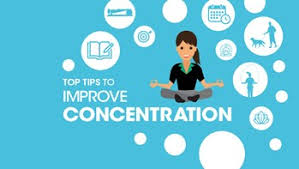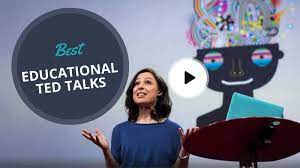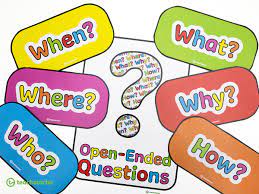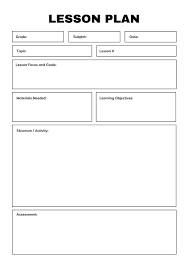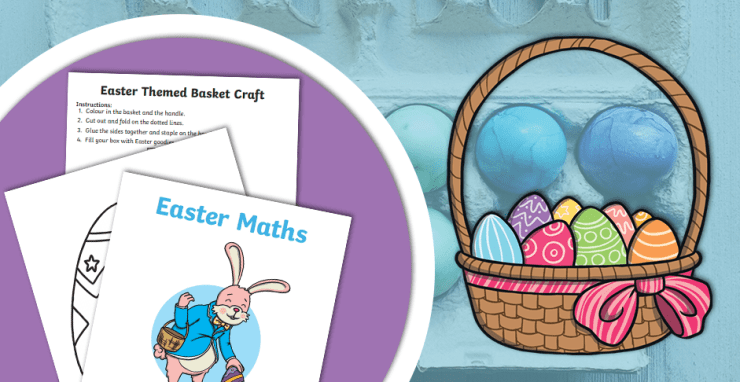Blogging has become a dynamic tool for educators who wish to enhance their classroom experience. By integrating blogging into their curriculum, teachers can offer their students a multitude of benefits that extend far beyond the traditional learning environment. Here are seven benefits of blogging in the classroom:
1. Enhanced Writing Skills: Blogging regularly encourages students to practice writing and editing, thereby improving their overall communication skills. With an audience in mind, students learn to write more clearly and effectively to convey their thoughts and ideas.
2. Technological Proficiency: Navigating and maintaining a blog requires a certain level of digital literacy. By learning how to use various blogging platforms, students acquire valuable technology skills that are increasingly important in the digital age.
3. Encourages Reflection: Blogging allows students to reflect on what they have learned and express their understanding in their own words. This process not only reinforces their knowledge but also promotes critical thinking as they analyze and synthesize information.
4. Increases Engagement: A classroom blog fosters a sense of community and involvement among students. They are more likely to participate actively when they know their work will be shared with others and can receive feedback from peers and the broader online community.
5. Boosts Confidence: As students continue to write and share their work, they gain confidence in both their writing abilities and in sharing their opinions. This can have a positive effect on all areas of learning by encouraging them to take risks and express themselves more openly.
6. Expands Horizons: Blogging connects students with a global audience, exposing them to different perspectives and cultures. It provides opportunities for collaboration with people from various backgrounds, which can enhance cultural understanding and tolerance.
7. Builds Responsible Digital Citizenship: By publishing on a blog, students learn about online etiquette, safety, and privacy. They become more aware of their digital footprint and how to be responsible contributors to the online world.
Blogging in the classroom offers a productive fusion of technology with traditional teaching methods. It equips students with skills necessary for both academic success and real-world viability while fostering a more engaging, reflective, and collaborative learning environment.
Teaching With a Mask
Teaching with masks has become a common reality in various parts of the world due to the ongoing health and safety measures against respiratory illnesses. Adapting to this new mode of communication in classrooms has presented unique challenges and opportunities for educators and students alike.
One of the significant challenges that teachers face while teaching with a mask is the reduced ability to convey facial expressions. Since much of human communication is non-verbal, wearing a mask can hinder the full expression of emotions and nuanced reactions which are often crucial for creating an engaging learning environment. Teachers have had to rely more heavily on their vocal tone, pitch, and body language to convey meaning and provide feedback.
Additionally, masks can muffle sound, making it harder for students to understand verbal instructions or discussions. This has led to teachers needing to project their voices more clearly and sometimes resorting to voice amplification devices. Clarity of speech and enunciation have become more crucial than ever.
Despite these challenges, teaching with a mask has also had some positive impacts. For instance, it has encouraged educators to explore new pedagogical strategies that are less reliant on verbal communication. There has been an increased use of digital tools and multimedia resources that can cater to various learning styles and provide individualized instructions. Moreover, it has highlighted the importance of clear written instructions and visual aids which can be helpful to all students, especially those who may have hearing difficulties or are non-native speakers of the language of instruction.
Furthermore, educators have noticed an increase in empathy and understanding within the classroom community as everyone adapts together. Students are learning to pay closer attention and become more attuned to other forms of communication which can foster an inclusive environment.
In conclusion, teaching with a mask is a testament to the adaptability and resilience of educators. It serves as an opportunity for innovation in teaching methods and tools while also reminding us of the fundamental human drive for connection and communication even under constrained circumstances. As education continues during times that necessitate mask-wearing, both teachers and students evolve together in this altered landscape of learning.
Ways to Improve Student Concentration
In today’s fast-paced and distraction-filled world, it’s increasingly challenging for students to maintain their focus on academic tasks. However, enhancing concentration is essential for academic success and effective learning. Here are several strategies teachers, parents, and students can use to improve concentration.
Creating a Distraction-Free Environment
One of the most crucial steps in improving concentration is minimizing distractions in the study area. This could involve finding a quiet space, turning off notifications on electronic devices, or using apps that block social media during study times.
Setting Specific Goals
Having clear, attainable objectives helps students focus on what they need to accomplish in a given study session. These goals should be specific (e.g., finish reading a chapter, solve 10 math problems) and time-bound (e.g., within an hour).
Taking Regular Breaks
The Pomodoro Technique is widely recommended for maintaining high levels of concentration. This involves working for 25 minutes followed by a 5-minute break. Long study sessions without breaks often lead to mental fatigue and reduced focus.
Practicing Mindfulness and Meditation
Mindfulness exercises and meditation can train the brain to focus better. Even short daily practices have been shown to improve attention spans over time.
Healthy Lifestyle Choices
A balanced diet, adequate sleep, and regular physical exercise can greatly influence cognitive functions and concentration levels. Students should ensure they eat healthily, get enough sleep each night, and engage in physical activities.
Prioritizing Tasks
By tackling more challenging work first when energy levels are highest, students can dedicate their full attention where it’s most needed. Less demanding tasks can be reserved for later when concentration may wane.
Active Learning Techniques
Active learning techniques such as summarizing information aloud, teaching the material to someone else, or applying concepts in practical scenarios help keep the mind engaged. When students are actively involved in their learning process, they are less likely to get distracted.
These strategies represent only a few ways students can enhance their concentration skills. Tailoring these approaches according to personal habits and preferences will yield the best results in improving focus during study sessions.
By taking control of both their environment and their mindset towards studying, students will cultivate concentration as a skill that extends beyond academics into all areas of life.
Teachers Ted Talks Youll Want to Watch
Teachers often play a crucial role in inspiring and educating not just their students, but people outside the classroom as well. TED Talks given by teachers can offer insights into education, personal growth, and the power of learning. These talks can be incredibly motivating, pushing viewers to consider new perspectives and possibly even pursue action towards positive change.
1. Rita Pierson: “Every Kid Needs a Champion”
In this heartwarming talk, lifelong educator Rita Pierson champions the importance of connection and relationships between teachers and students. She emphasizes that learning cannot happen without a strong relationship built on mutual trust and respect.
2. Dan Meyer: “Math Class Needs a Makeover”
Math teacher Dan Meyer captivates his audience by challenging the traditional approaches to teaching math. He advocates for teaching students to think and analyze like real mathematicians, rather than just memorizing formulas.
3. Sarah Kay: “If I Should Have a Daughter…”
Sarah Kay is a spoken word poet who illustrates the power of poetry in education. She discusses her teaching experiences and describes how poetry can be used as a tool to engage students and encourage them to express themselves authentically.
4. Ken Robinson: “Do Schools Kill Creativity?”
Perhaps one of the most famous TED Talks on education, Sir Ken Robinson’s presentation eloquently argues for creating an education system that nurtures creativity. He explains why it’s essential to cultivate an environment where children’s natural talents can flourish.
5. Tyler DeWitt: “Hey Science Teachers — Make it Fun”
High school teacher Tyler DeWitt calls for science educators to make their subjects more engaging and relatable. His talk underscores the importance of enthusiasm and storytelling in making complex scientific concepts accessible and exciting for students.
6. Sal Khan: “Let’s Use Video to Reinvent Education”
Salman Khan, founder of Khan Academy, makes the case for using video technology to personalize education. By offering an alternative to traditional classroom lectures, he shows how technology can provide more time for interactive class activities, tutoring, and peer-to-peer learning.
By watching these Ted Talks, educators, parents, and anyone interested in learning more about educational practices can gain valuable insights into innovative teaching strategies that prioritize student success and engagement. These speakers prompt us to reflect on the transformative power of education and motivate those within the field to advocate for positive change in their classrooms.
10 Simple Ways to Encourage Students to Ask Questions
1. Foster a Safe Environment: Make your classroom a safe space where students feel respected and their opinions are valued. Let them know that there are no ‘stupid’ questions and that curiosity is encouraged.
2. Be Approachable: Ensure you are approachable as a teacher. Smile, make eye contact, and be open to interactions beyond lecture time. This helps students feel comfortable coming to you with questions.
3. Create a Culture of Inquiry: Promote a culture of questioning by asking questions yourself. By modeling this behavior, you’ll show students that inquiry is a normal part of learning.
4. Praise Effort: When students take the initiative to ask questions, praise their efforts regardless of how basic or complex their queries are.
5. Use Think-Pair-Share: This technique allows students to think about a question independently, then discuss it with a peer before sharing with the larger group, thus lowering the stakes for asking questions.
6. Encourage Question-Generating Activities: Use activities that require students to come up with their own questions rather than just answering them, such as having them develop questions for an upcoming topic.
7. Provide Anonymity When Needed: Give students the option to ask questions anonymously through question boxes or digital platforms if they’re too shy to speak up.
8. Respond Positively: Always acknowledge and respond positively to questions asked, ensuring that students feel heard and understood.
9. Limit Immediate Correction: If a student’s question reveals a misunderstanding, guide them towards the correct answer without immediate correction which can sometimes discourage further questioning.
10. Use Question Stems: Provide question stems such as “What if…?”, “How might…?”, or “Why do you think…?” to help scaffold the process of asking deeper and more thoughtful questions.
By utilizing these strategies, teachers can create an environment that not only encourages but celebrates the act of questioning, fostering a lifelong love for learning and exploration in their students.
Amazing Supply Teaching Daily Plans and Activity Ideas
Supply teaching can be quite a challenge due to the unpredictable nature of the job—you never quite know what you’re walking into. However, with a creative toolbox of daily plans and activities, supply teachers can transform potential chaos into an opportunity for enjoyable and effective learning. Here’s how to create amazing supply teaching experiences day after day.
1.Be Prepared: Always have a ‘supply teacher survival kit’ that includes engaging lesson plans for a variety of age groups, subject matter, and durations. Your kit might include literacy games, math puzzles, quick science experiments, and art projects—all tailored to different key stages.
2.Flexible Lesson Plans: Develop adaptable lesson plans that can be adjusted on the fly based on the students’ abilities, interests, and the available resources in the classroom. These could range from short stories for quick reading sessions to modular worksheets that cater to various learning levels.
3.Ice Breaker Activities: Students will respond well to a new face if you can quickly establish rapport. Ice breaker games that encourage sharing and interaction can lead to a more comfortable and conducive learning environment.
4.Inclusive Educational Games: Keep an array of educational games that are inclusive and cater to various types of learners—visual, auditory, kinesthetic, etc. This helps ensure all students are engaged despite their preferred learning style.
5.Interactive Group Projects: Plan activities that encourage cooperation among classmates, such as group research projects or collaborative art pieces. Collaboration promotes communication skills and can make students more amenable to temporary staff.
6.Utilise Technology: If resources permit, incorporate technology into your teaching methods through interactive apps and online platforms that students are familiar with. This could also serve as an excellent backup when technology is part of the regular curriculum.
7.Tailor to Curriculum: Have a general understanding of the current curriculum so you can swiftly tailor your lessons to align with what students have been learning with their regular teacher.
8.Time Management Activities: Ensure each lesson contains activities with varying durations so you can manage class time effectively. Having quick transitions between tasks can keep energy levels high and maintain student focus.
9.Cultural Awareness Projects: Activities like exploring different cultures through art or discussion enhance global awareness amongst pupils and broaden their knowledge base while being fun and engaging.
10.Reflection Sessions: End the day with a reflective activity where students discuss what they learned or enjoyed. This builds a sense of closure and accomplishment while giving you insight into what works well for future planning.
By being armed with a vibrant array of daily plans and activities such as these, supply teachers can not only survive but truly thrive in any classroom situation they encounter—ensuring that both they and their students have an amazing day full of learning adventures!
How to Write Lesson Plan Printable Lesson Plan Template
Writing a lesson plan is an essential skill for educators, which helps them structure their lessons and ensure they meet the learning objectives for their students. Whether you’re a new teacher or an experienced educator looking to refresh your approach, having a printable lesson plan template can streamline the process. Here’s how to write one:
Title: Start by naming your lesson plan. The title should give a clear indication of the subject or topic.
Objective: Clearly state what the students should be able to do by the end of the lesson. Objectives should be specific, measurable, achievable, relevant, and time-bound (SMART).
Materials: List all materials and resources you and your students will need during the lesson.
Introduction: Plan an engaging start to your lesson that will get students’ attention and prepare them for learning.
Instruction: Detail the main content of your lesson, including lectures, discussions, readings, and demonstrations. Consider how you’ll present information and explain key concepts.
Activities: Prepare student-centered activities that reinforce your instructional content. This could include group work, hands-on tasks, problem-solving exercises, or creative projects.
Practice: Decide on opportunities for students to practice skills or apply knowledge, ensuring these exercises align with your lesson objectives.
Assessment: Outline how you will assess student understanding—this could be through questions, quizzes, observations, or other assessment tools.
Conclusion: Plan a summary or closing activity that will help consolidate learning and tie all elements of your lesson together.
Differentiation Strategies: Consider how you will tailor your lesson to meet a range of abilities and learning styles within your classroom.
Follow-up: Think of homework assignments or activities that can extend learning beyond the classroom.
Here is a simple printable template based on this structure:
Lesson Plan Template
– Title:
– Date:
– Subject/Grade Level:
– Duration:
—
– Objective(s):
–
–
—
– Materials/Resources:
–
—
– Introduction (Warm up/Engagement):
–
—
– Instruction (Content/Delivery):
–
—
– Activities (Student-Centered):
–
—
– Practice/Application:
–
—
– Assessment (Formative/Summative):
–
—
– Conclusion (Wrap up):
–
—
– Differentiation Strategies:
–
—
– Follow-up/Homework:
–
—
Remember to leave space between each section for detailed notes and adjust each part as necessary for specific lessons. Keep it flexible enough to accommodate the dynamic nature of classroom teaching. With this printable template in hand, teachers can approach each class organized and prepared to deliver effective and engaging lessons.
Easter 2024 Teaching Resources
Easter is a time for renewal, celebration, and for those in the world of education, an opportunity to infuse the classroom with energetic and engaging teaching resources. With Easter 2024 on the horizon, teachers are looking for innovative ways to incorporate this festive season into their lesson plans.
Here are some creative ideas for Easter 2024 teaching resources that can make learning exciting and relevant:
1. Easter Around the World:
Create a multicultural lesson plan that explores how different countries celebrate Easter. Students can learn about unique traditions, foods, and religious practices. This can be turned into a digital presentation or a poster board display.
2. Easter Science Experiments:
Utilize the theme of eggs in science experiments. Activities such as egg drop challenges, studying chemical reactions with vinegar and eggshells, or exploring buoyancy with eggs can make learning hands-on and fun.
3. Easter Math Problems:
Develop math problems related to Easter, including arithmetic using Easter candy counts, geometry problems designing Easter eggs with specific dimensions, or graphing activities based on Easter data (like average spending on Easter treats).
4. Creative Writing Prompts:
Encourage students’ imagination with creative writing prompts related to Easter. They could write a story from the perspective of the Easter Bunny, compose poems about spring renewal, or draft explanatory essays about why we celebrate Easter.
5. Easter Art Projects:
Art projects like creating Easter egg mosaics, designing greeting cards for an Easter celebration, or sculpting with clay inspired by spring creatures can cater to creative expression.
6. Historical Studies of Easter:
Develop history lessons that explore the origins of Easter traditions and how they have evolved over time. This can include research assignments or even re-enactments of historical events.
7. Environmental Projects:
Use the idea of new life and renewal to promote lessons on environmental stewardship. Activities could involve starting an herb garden at school or organizing a local cleanup while learning about plants and wildlife that are active in spring.
8. Interactive Technology Assignments:
Use educational apps to create interactive hunts for facts about Easter or spring through QR codes placed around the school or online scavenger hunts using research skills.
9. Music and Dance:
Teach songs related to springtime and Easter in music class, or create a dance performance inspired by the lively spirit of the season.
10. Dramatic Play:
This resource is for younger students who could engage in dramatic play areas set up to mirror an Easter market or spring festival where they can role-play various characters associated with the holiday.
By integrating these vibrant resources into your curriculum for Easter 2024, you will spark curiosity and engage students in a mixture of traditional academic subjects with creative and cultural education that reflects the joyous spirit of Easter.
12 Ways to Improve Student Concentration That Really Work
Student concentration is a critical factor in educational success, and improving it can lead to better learning outcomes. Here are twelve ways that have been proven effective in enhancing student concentration:
1. Organized Study Space: Clutter-free and organized study areas help minimize distractions, enabling students to focus better on their tasks.
2. Scheduled Breaks: Following the Pomodoro Technique or similar methods, where short breaks are taken after focused study sessions, can increase overall concentration levels.
3. Goal Setting: By setting clear, achievable goals for each study session, students can stay motivated and concentrated on the task at hand.
4. Nutrition: A well-balanced diet that includes brain-boosting nutrients like omega-3 fatty acids can enhance cognitive function and concentration.
5. Mindfulness and Meditation: Regular practice of mindfulness exercises and meditation can improve focus, attention span, and emotional regulation, contributing to better concentration.
6. Regular Physical Activity: Exercise increases blood flow to the brain and reduces stress, both of which are essential for maintaining high levels of concentration.
7. Adequate Sleep: A regular sleep schedule with sufficient hours of quality sleep is crucial for cognitive functions including concentration.
8. Management of Distractions: Identifying potential distractions before they occur and creating strategies to manage or eliminate them helps maintain a concentrated state of mind.
9. Active Learning Techniques: Engaging with the material through discussion, teaching others, or applying it in practical ways can deepen focus and understanding.
10. Use of Study Aids: Tools such as flashcards, diagrams, or educational software can help maintain engagement and concentration on the study material.
11. Positive Reinforcement: Rewarding oneself after achieving study goals can boost motivation and focus for future tasks.
12. Technology Boundaries: Establishing specific times when technology is permitted can help prevent the constant notifications from disrupting focus during study time.
Implementing these strategies can significantly improve student concentration levels which will lead to more effective learning and better academic performance overall.
Lunar New Year 2024 Teaching Resources
Lunar New Year, also known as Chinese New Year or Spring Festival, marks the beginning of a lunar calendar year and is celebrated by millions of people around the world. As 2024 approaches, educators can take advantage of this rich cultural celebration to create engaging and informative classroom activities. Here is a compilation of teaching resources to help educators bring the festivities and traditions of Lunar New Year into their classrooms:
1. Printable Zodiac Calendar: Provide students with a printable Chinese Zodiac calendar. This tool can help children learn about the different zodiac signs, their characteristics, and the rotation cycle.
2. Storybooks: Curate a list of storybooks that are centered around Lunar New Year. Select books that highlight different aspects of the festival, like “Bringing In the New Year” by Grace Lin or “The Great Race: Story of the Chinese Zodiac” by Dawn Casey for younger students.
3. Cultural Presentations: Create PowerPoint slides on important Lunar New Year traditions such as the Lantern Festival, dragon dances, red envelopes, and traditional foods. Include pictures and brief explanations suitable for various grade levels.
4. Art Projects: Plan art projects like paper lantern making, dragon puppets, or creating red envelopes. These hands-on activities help kids understand the significance behind these objects during Lunar New Year.
5. Video Resources: Compile a list of safe-to-watch videos that showcase Lunar New Year celebrations around the world. There are multiple documentaries and segments from educational sources that provide visuals and commentaries on how different cultures celebrate this holiday.
6. Language Activities: Introduce simple Mandarin phrases related to Lunar New Year like “Xin Nian Kuai Le” (Happy New Year) or “Gong Xi Fa Cai” (Wishing You Wealth and Prosperity). You could also incorporate calligraphy exercises for older students.
7. Printable Worksheets: Develop worksheets that focus on Lunar New Year’s history, zodiac sign traits, or vocabulary words relevant to the holiday’s customs and traditions.
8. Lesson Plans: Offer complete lesson plans outlining day-by-day activities that cover the history, significance, and traditions of Lunar New Year tailored for different age groups.
9. Music Integration: Share recordings or videos demonstrating traditional music played during Lunar New Year’s festivities. Include information on instruments such as erhu or pipa for music class integration.
10. Virtual Field Trips: Suggest virtual tours of museums with Asian exhibits or temples during Lunar New Year, allowing students to explore celebrations from afar in real-time where possible.
By utilizing these resources in your curriculum planning for 2024’s Lunar New Year celebration, your students will have an enriched cultural experience while they learn about one of the most vibrant festivals across Asia and beyond.



